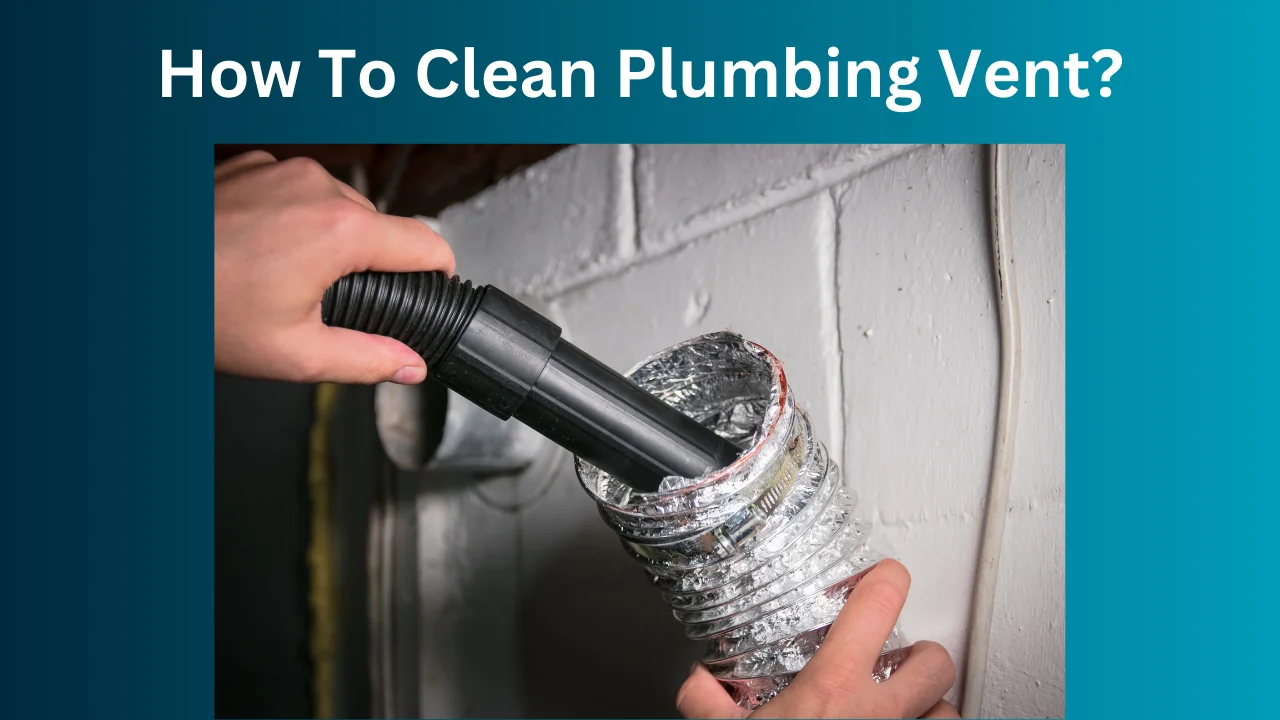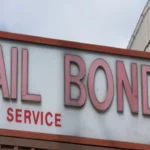Maintaining good drainage and airflow in your plumbing system requires regular vent cleaning. How to clean plumbing vent? It is common practice to locate the vent pipe on the roof before beginning to clean a plumbing vent. Prioritize safety by utilizing a solid ladder and donning non-slip footwear when ascending to the roof. When you get there, look inside the vent hole for anything that might be blocking airflow, like leaves or bird nests. Carefully insert a garden hose or plumber’s snake into the vent pipe to remove any obstructions. Use high-pressure water pressure from a hose to force the blockage out of the pipe. A specialized plumbing vent brush or auger may be necessary to remove more entrenched obstructions. Because additional problems can arise from partially cleared obstructions, it is critical to make sure the blockage is completely removed. Pour water down the vent after clearing it to make sure it’s flowing freely. To avoid such clogs in the future, it is important to do routine maintenance such as inspecting the vent and clearing it of debris on a regular basis. To further reduce the likelihood of debris buildup, it is recommended to prune any branches that hang over the vent. If you want your plumbing system to work better, avoid bad smells, and protect your home’s drainage system, then you need to clean your plumbing vents properly.
Understanding Plumbing Vents
Purpose of Plumbing Vents
Your home’s plumbing system would not function properly without plumbing vents. They let air into the pipes, which keeps a vacuum from forming, which would otherwise reduce or halt the water’s flow. In addition to keeping sewage gases outside of your home, vents enable them to escape.
Common Issues with Plumbing Vents
Slow drainage, gurgling sounds coming from the drains, and unpleasant sewer odours emanating from within the house are all symptoms of clogged plumbing vents. You can tell when your plumbing vent needs cleaning if you are familiar with these typical problems.
Signs of a Clogged Plumbing Vent
If you know what to look for, you can fix a blocked plumbing vent before it becomes a big deal. Slow drainage, strange noises coming from the plumbing, and unpleasant odours are common indicators.
Tools Needed for Cleaning Plumbing Vents
Cleaning your plumbing vent will be a lot less of a hassle if you have the proper equipment. A sturdy ladder, shoes that won’t slide, a snake for plumbers, a garden hose, and maybe even an auger or a special brush for plumbing vents are all necessary tools.
Preparation for Cleaning
Safety Precautions
Prioritise safety while cleaning a plumbing vent. Wear non-slip shoes and always use a sturdy ladder to avoid accidents. Think about getting a pro if you feel unsafe working on the roof.
Locating the Plumbing Vent
You must first identify the location of your plumbing vent before you can clean it. The majority of homes’ plumbing vents are located on the roof. The size and quantity of these pipes can change based on the layout of your plumbing system.
Inspecting the Vent Opening
Look for obvious obstacles, like leaves or bird nests, in the vent opening after you’ve found it. It may be easier to clean if you remove these things by hand.
Choosing the Right Cleaning Method
The best way to clean a clog depends on the specific obstruction. If you know what choices you have, you can pick the one that works best for you.
Cleaning Techniques
Using a Plumber’s Snake
You can unclog plumbing vents with the help of a plumber’s snake, a multipurpose tool. After inserting the snake into the vent, push it through the obstruction while twisting it to loosen the debris.
Using a Garden Hose
A garden hose is a versatile tool that can be used to remove obstructions. Turn on the high-pressure water and insert the hose into the vent. It is possible to force the obstruction through the pipe by using the water’s force.
Using an Auger
When dealing with more difficult obstructions, an auger may prove to be more effective than a hose or snake. Turn the handle to split up and remove the obstruction after inserting the auger into the vent.
Using a Plumbing Vent Brush
To Clean the Inside of the Vent Pipe, Use a Plumbing Vent Brush A dedicated plumbing vent brush is useful for this task. Place the brush inside the vent and use it to remove any buildup on the pipe’s edges.
Verifying the Blockage is Cleared
Pour water down the vent after you’ve used your preferred cleaning method to make sure it’s flowing freely. After the obstruction is removed, the water should flow freely.
Preventive Maintenance
Regular Inspections
If you check your plumbing vents on a regular basis, you can catch clogs before they cause major issues. At the very least twice a year, and preferably after each winter and autumn, inspect the vents.
Clearing Debris
If you want to keep the vent clear of obstructions in the future, clear the area around it. Reduce the risk of tree branches hanging over the vent and clear the area of any leaves or other debris.
Installing Vent Covers
One way to keep debris out of vents is to install covers on them. The installation of these covers is simple, and they will ultimately save you a great deal of work.
Professional Maintenance
Professional plumbers have the equipment and training to clean your plumbing vents thoroughly, but do-it-yourself maintenance is sometimes effective as well. It may be worth it to bring in an expert for routine upkeep.
Understanding the Importance of Clean Plumbing Vents
Ensuring Proper Drainage
Maintaining clean plumbing vents is critical for effective home drainage. Problems like clogs and reduced water flow can result from obstructed vents.
Preventing Sewer Gas Smells
You can avoid having sewage gases seep into your home by installing plumbing vents. When vents are clogged, these gases can back up into your home, creating a foul stench.
Maintaining Plumbing Efficiency
If you want your plumbing to work efficiently, you need to keep the vent system clean. You can prolong the life of your plumbing system and save money on repairs by doing this.
Avoiding Costly Repairs
You can save a lot of money on plumbing repairs by keeping up with routine maintenance on your vents. If you keep the vents clear, you can avoid costly plumbing repairs and damage.
Enhancing Overall Home Health
The health of your home as a whole is enhanced when the plumbing system is in good working order. Maintaining clean vents is an important part of keeping your plumbing system in good working order, which in turn protects your family’s health and safety.
FAQs
What Causes Plumbing Vent Clogs?
Plumbing vent clogs can be caused by a variety of factors, including leaves, bird nests, debris, and even small animals. Over time, these obstructions can build up and block the vent.
How Often Should Plumbing Vents Be Cleaned?
It’s recommended to inspect and clean your plumbing vents at least twice a year, especially after the fall and winter seasons. Regular maintenance can help prevent blockages and keep your plumbing system functioning properly.
Can a Clogged Plumbing Vent Affect Water Pressure?
Yes, a clogged plumbing vent can affect water pressure. When the vent is blocked, it can create a vacuum in the plumbing system, slowing down or stopping the flow of water.
What Tools Are Needed to Clean a Plumbing Vent?
Essential tools for cleaning a plumbing vent include a sturdy ladder, non-slip shoes, a plumber’s snake, a garden hose, an auger, and a plumbing vent brush. Having these tools on hand can make the cleaning process much easier and more effective.
Are Chemical Cleaners Safe for Plumbing Vents?
It’s generally not recommended to use chemical cleaners for plumbing vents, as they can be harsh and potentially damage the pipes. Mechanical cleaning methods, such as using a snake or auger, are usually more effective and safer for your plumbing system.
Conclusion
Keeping your plumbing vent clean is an important part of keeping your plumbing system efficient and healthy. If you follow this guide on how to clean plumbing vent? You should be able to keep your plumbing vent unobstructed so that water can drain and air can circulate freely. Installing vent covers and cutting back overhanging branches are a couple of preventative measures that can help keep your plumbing system in great condition. Always call a professional plumber for help if you’re not sure what you’re doing or if you feel uneasy about the process.

Shannon Reyes is a seasoned writer with a knack for crafting engaging blogs on a variety of service industries, including plumbing, cleansing, moving, pest control, and roofing. With a keen eye for detail and a passion for helping readers navigate complex topics, Shannon brings her expertise to life through informative and accessible content.










